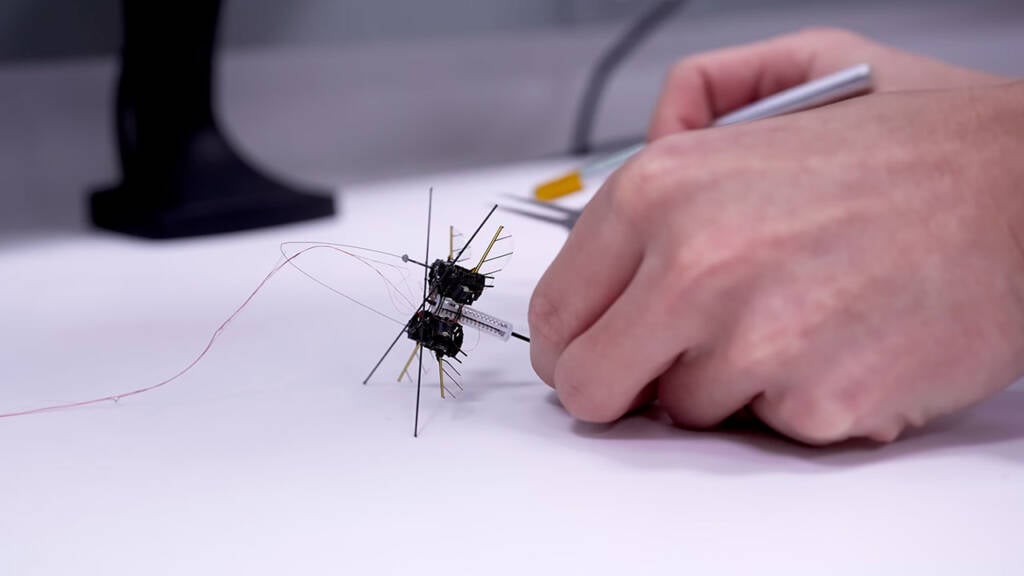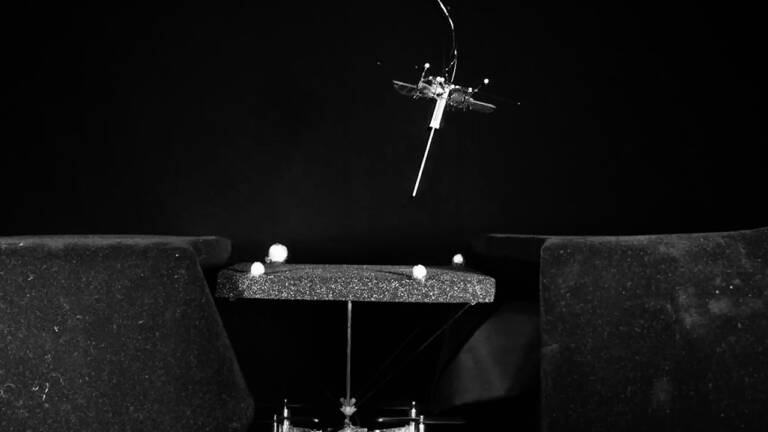MIT engineers have introduced a groundbreaking tiny robot that mimics the flight and agility of a bumblebee, showcasing the potential of bio-inspired robotics for tasks on Earth and beyond. Designed by Kevin Chen’s Soft and Micro Robotics Lab, this paperclip-sized marvel demonstrates how lessons from nature can transform technology.
A leap in bio-inspired robotics
The tiny robot weighs less than a gram yet flaps its wings 400 times per second, hovering, flipping, and darting with precision. Powered by four soft actuators—artificial muscles that contract and expand—it can also hop up to 20 centimeters, four times its own height. This hopping mechanism, inspired by fleas and grasshoppers, consumes 60% less energy than conventional flying robots of the same scale. Its lightweight frame allows it to carry payloads up to ten times its own weight, including sensors, cameras, and circuits.
The robot’s unique design combines energy-efficient mechanics with intelligent control systems. A compression spring stores energy during each landing, releasing it to propel the robot into its next hop. Meanwhile, its wings provide lift and balance, allowing it to navigate diverse surfaces—from ice and glass to moving drones—without sustaining damage.
From Earth farms to Mars exploration vehicle
The MIT team envisions practical applications for this tiny robot both on Earth and in space. On Earth, it could assist with pollinating indoor farms, where natural bees struggle under artificial light, or perform environmental monitoring in hard-to-reach areas. In the future, the robot could act as a Mars exploration vehicle, supporting agriculture in extraterrestrial environments without introducing Earth insects. Its ability to carry small payloads, combined with acrobatic hops and autonomous navigation, makes it ideal for search-and-rescue operations and collaborative tasks in confined or hazardous spaces.
Technology inspired by nature
The development of this tiny robot demonstrates the growing influence of bio-inspired robotics, where engineers study millions of years of evolution to replicate the most efficient forms of locomotion. From the rapid wing flaps of bees to the energy-saving leaps of grasshoppers, MIT’s research team has created a system that balances agility, power efficiency, and robustness. Advanced algorithms allow the robot to analyze landing conditions in real time, adjusting its wing flaps to maintain rhythm and stability across varying terrain.
While fully autonomous deployment may still be decades away, these Tiny Robots offer a glimpse into the future of robotics—machines that move with the finesse of insects, perform delicate environmental tasks, and even expand the reach of humanity to other planets.


